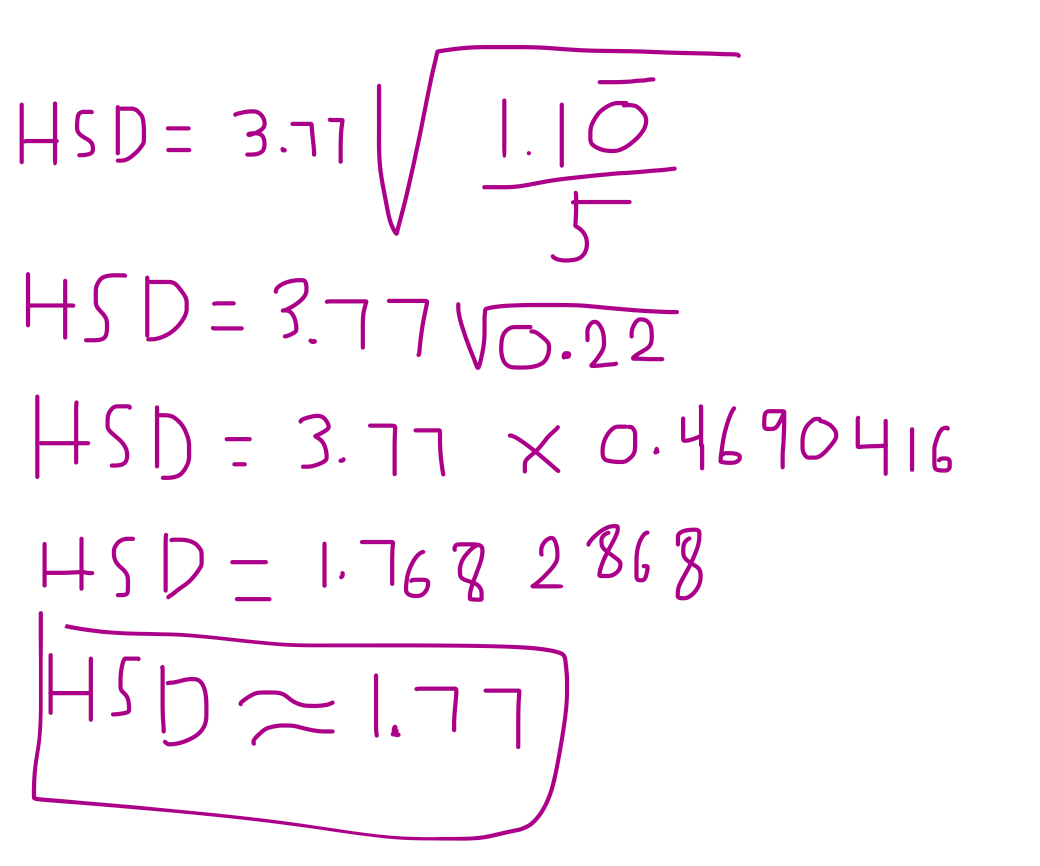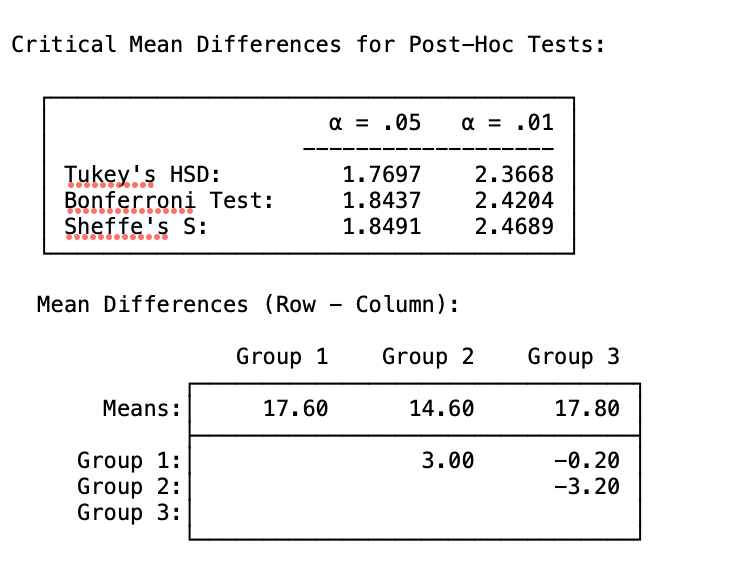The assumptions for performing a single-sample T-test.
What is...
1. Approximates a normal distribution.
2. Estimated standard deviation.
3. One random sample of interval or ratio scores.
The assumptions for an independent-sample T-Test.
What is...
1. Approximates a normal distribution.
2. Observations within each sample are independent.
3. Homogeneity of variance. The two populations from which the samples are selected have equal variances.
The assumptions for a t-test with two related samples (within groups).
What is...
1. Observations within each group are independent.
2. Population of d-scores (difference scores) is normally distributed.
Conceptual content: The assumptions for a one-way between subjects ANOVA (hint: Exactly the same as the assumptions for an independent-samples t-test).
What is...
Homogeneity of variance, or just equal variances.
Population from which samples are drawn is normal.
Observations within each sample are independent.
Conceptual content: Decide if it is possible to calculate a negative F-value.
What is...
It is not. Something went wrong with your calculations, as variances can never be negative.
Conceptual: Define a post-hoc test.
What is...
Additional hypothesis tests that are done after an ANOVA to determine which mean differences are significant (or not).
Note that since ANOVA is dealing with 3+ groups/levels, doing an ANOVA alone is not telling us WHICH mean differences are significant. A significant F-ratio is only revealing that of the mean differences, there is AT LEAST ONE that exists. Post-hoc helps us to clarify which of those mean differences are actually significant.
We have a sample of 6 students who took a practice test for an exam, and we want to see if their average score is different from the population mean of 70. Assume that the alpha level is 0.05.
First, decide if this is a one-tailed or two-tailed test. Then set up your null and alternative hypotheses, and solve for t. Remember to compare the computed value to the critical, tabled value of the t-distribution.
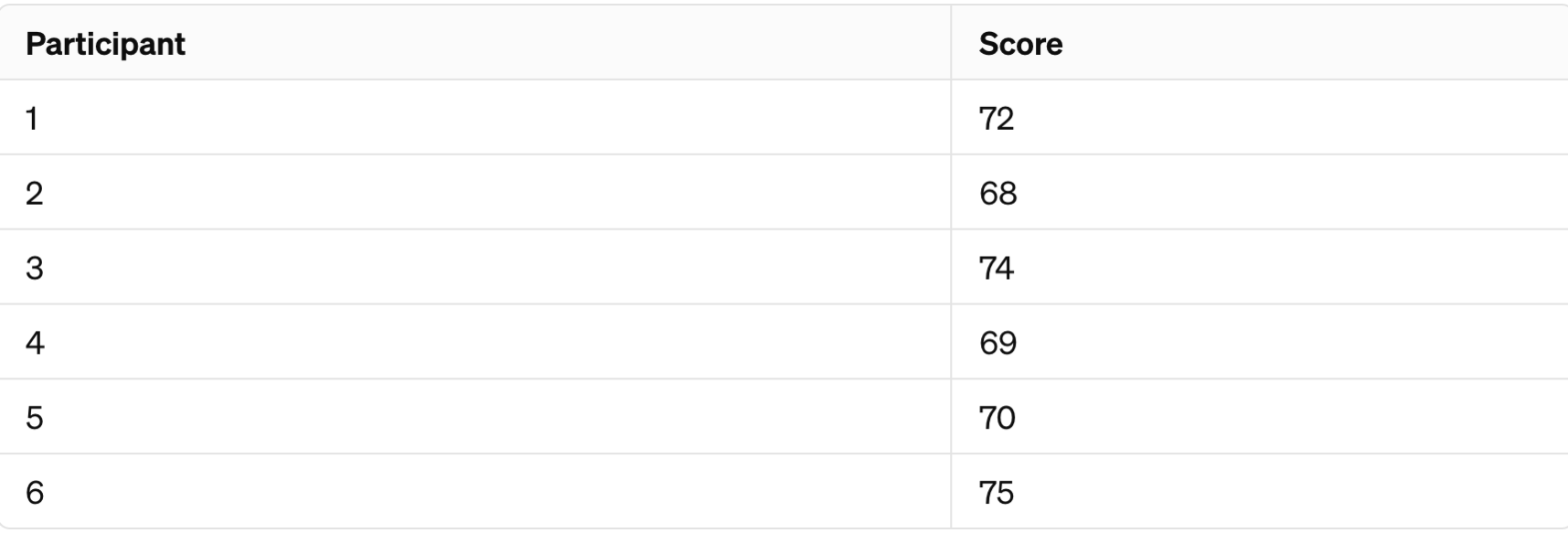
What is...
This is a two-tailed test. Nothing in the question indicates that we are looking for an increase or decrease; we're just seeing if there's a difference or an effect, overall.
For a two-tailed distribution, I set up my null and alternative hypotheses as
Null: μ = 70
Alternative: μ ≠ 70
Df: N - 1, which in this case would be 6 - 1 = 5. Using the t-distribution (in G&W appendix B, Table B.2):
The critical value (CV) is +/-2.571.
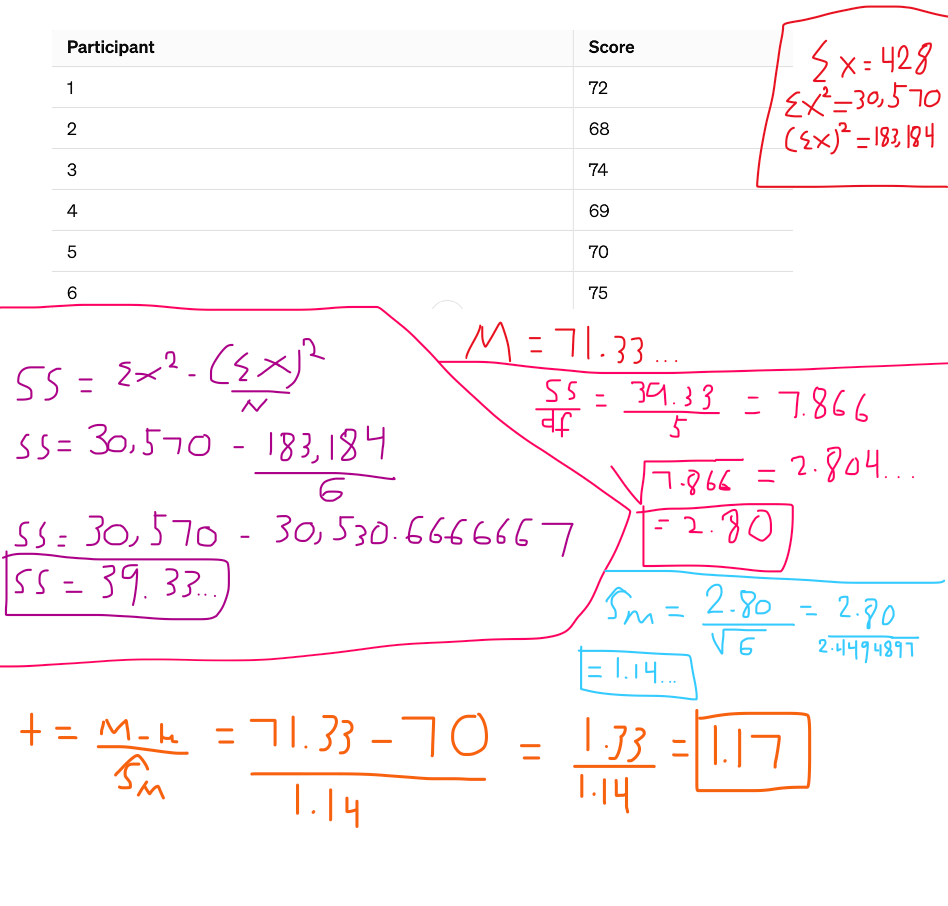
Ultimately, we fail to reject the null hypothesis, because the computed value of +1.17 falls in the region of retention and does not extend beyond our critical value needed for rejection +/-2.571
The conditions to perform an independent-samples t-test.
What is...
1. The IV can be quantitative or qualitative but must be between-subjects.
2. The DV is quantitative and at least interval level.
3. IV has two and ONLY two levels.
The conditions to perform a related-samples t-test.
What is...
1. The IV is within-subjects, quantitative or qualitative.
2. The DV is quantitative and at least interval level.
3. The IV has 2 and ONLY 2 levels.
Conceptual content: Identify the conditions to perform a one-way between-subjects ANOVA.
What is...
The DV is quantitative and at the interval level.
The IV is qualitative or quantitative, but must be between-subjects.
IV has 3 or MORE levels.
Note that ANOVA can be performed when you have 2 levels, but it makes more sense to just perform an independent-samples t-test in that case, especially since it's going to be obvious which means you are comparing directly.
Conceptual: An F-value of 1.00 means...
What is...
It means you retain the null and that none of the mean differences are different from each other. If F-value is greater than 1.00, it is more likely you will reject the null as there is a larger mean difference.
Conceptual: You only use a post-hoc test under two "conditions", tell me what those conditions are.
What is...
1. You rejected the null hypothesis (F-value is significant).
2. There are 3 or more treatment groups (defined as k).
PART 1: We want to see the effects of caffeine given to sleep-deprived patients on attention. With a mu of 51, use the data below to calculate a single-sample t-test value. Assume that the alpha level is 0.05.

What is...
There is evidence of a treatment effect. From the sample mean of 64 to the population mean of 51, caffeine given to sleep-deprived patients increases their attention.
Work shown below:
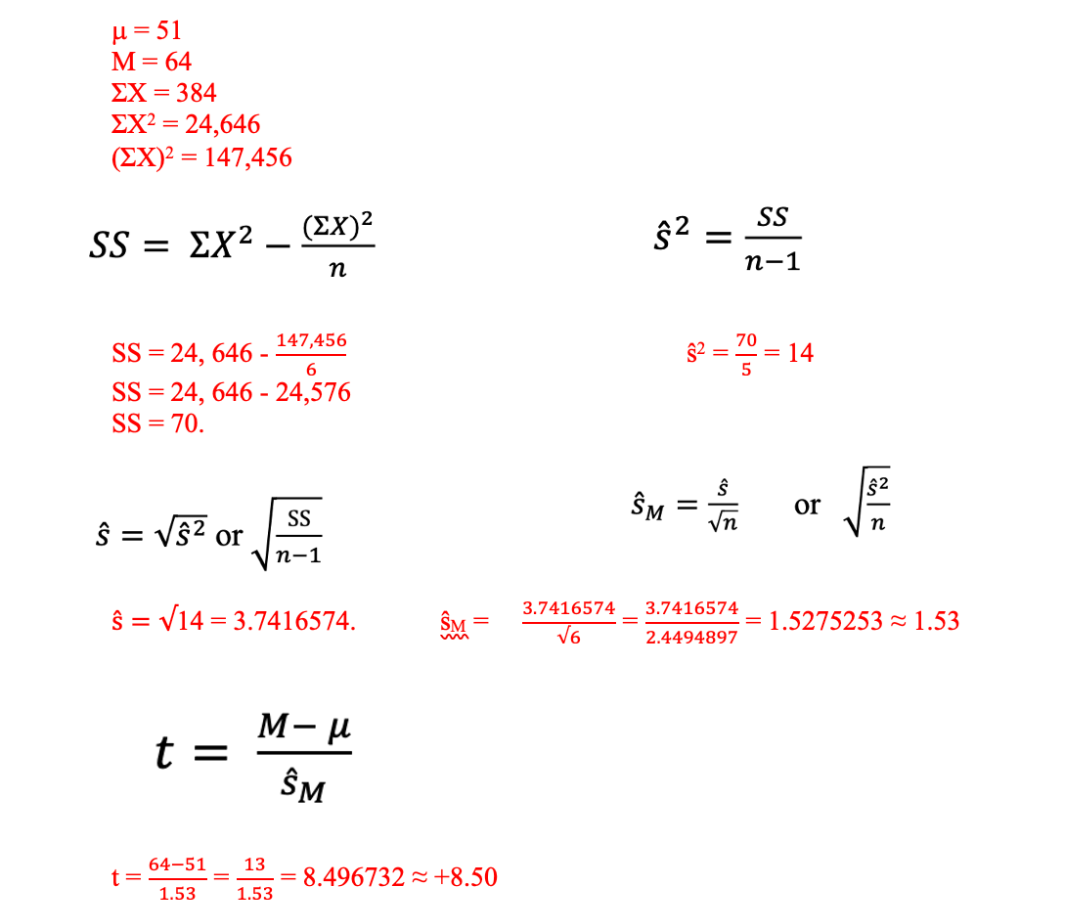
PART 1:

What is...
From the well-lit room (M = 8, SD = 2.93) to the dimly-lit room (M = 12, SD = 3.07), there is evidence that individuals in the well-lit room engage in less cheating. Work shown below:

PART 1: Perform a related-samples t-test using the data below. Assume two-tailed and 0.05 as our alpha level.
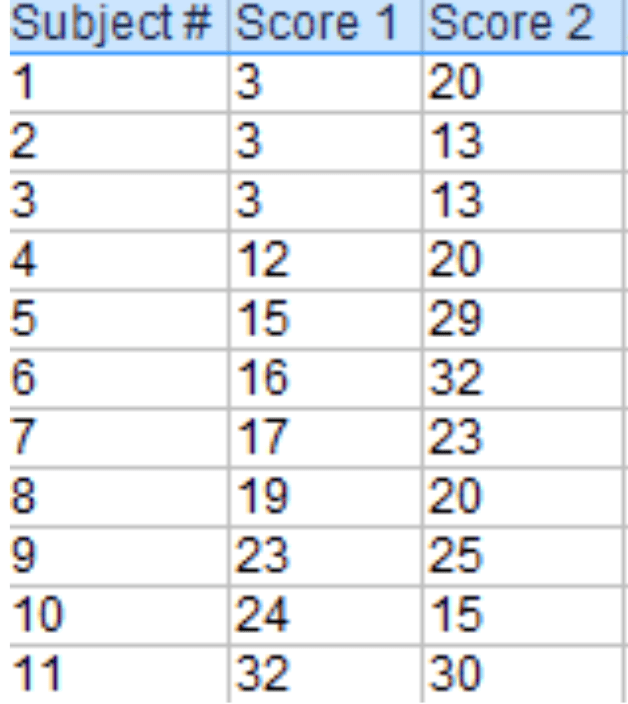
What is...
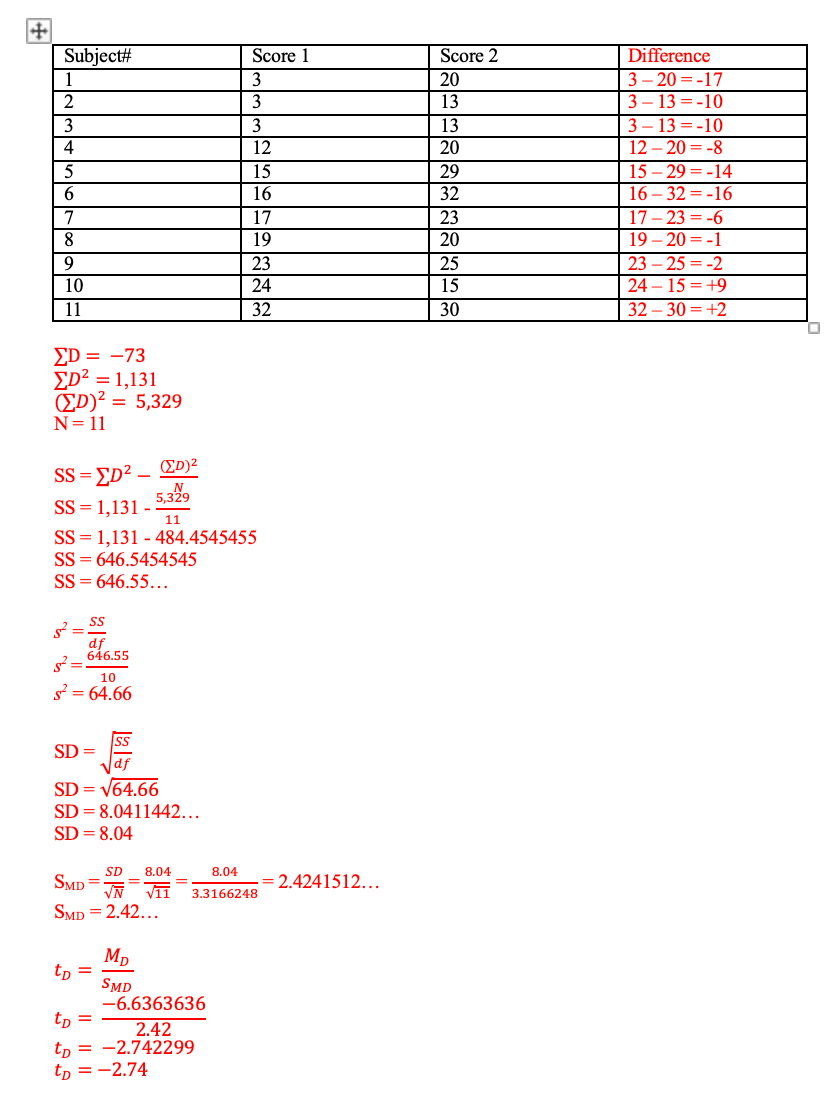
-2.74 is greater than the critical value needed for rejection (+/- 2.228) when degrees of freedom = 10 and our alpha level is at 0.05. We can reject the null hypothesis.
I also input the data into Stats HW Software (link in syllabus) and found the same result. Trust but verify, folks.

Also, don't sweat it if there's some minor rounding error. It's best only to round final answers, but it is a lot to write out or type out all the digits. Sometimes, I copy/paste directly from my computer calc, other times, I don't bother.
Computational: Fill in the values from the following, incomplete ANOVA source table:
What is...
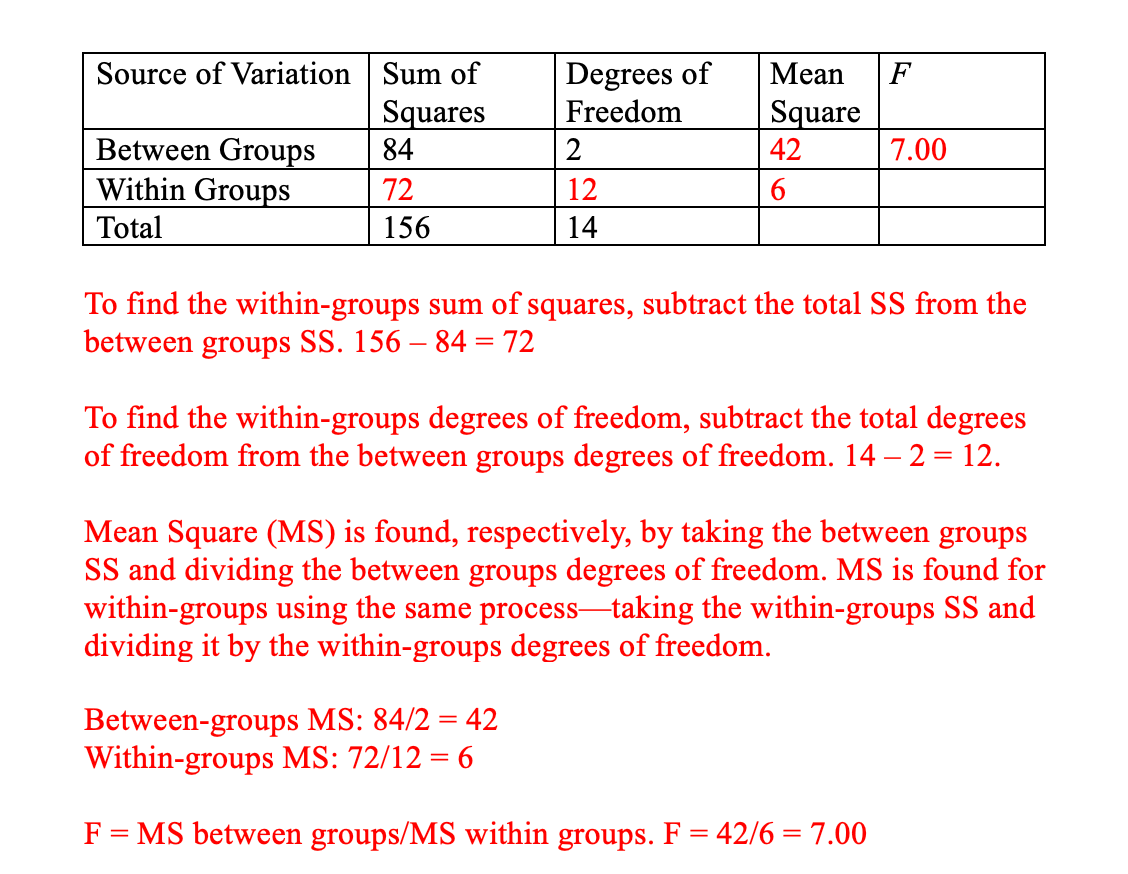
Additional tricks:
If F was missing, you would divide Between Groups MS by Within Groups MS.
If the Sum of Squares for Between Groups (84) was missing, you can multiply the Between Groups MS by the between groups degrees of freedom (2) to find it. Same goes for within groups if the SS was missing.
If the total SS was missing, you can add the between and within SS.
If one of the SS values was missing (either 84 or 72), just subtract the total from one of those values. Same goes for degrees of freedom.
If your degrees of freedom was missing for between groups, divide the between groups SS by the between MS to find it. Same goes for within groups.
Conceptual: Determine using the SPSS output below if the F-value is statistically significant.

What is...
Using ONLY the SPSS output, you can find if statistically significant by referring to the "Sig." column where it says .141
As 0.141 is greater than our p-level of 0.05, this is a statistically non-significant F-value. We retain the null that the three mean differences are NOT different from each other.
Conceptual: Define experimentwise alpha.
What is...
When performing multiple t-tests, it defines the probability of a type I error from all of the hypothesis tests, which does accumulate the risk of type I.
PART 2: Using the data from the previous question, since we have a significant t-value, go ahead and compute both Cohen's d and r2.
Be sure to interpret the strength of the effect size!
What is...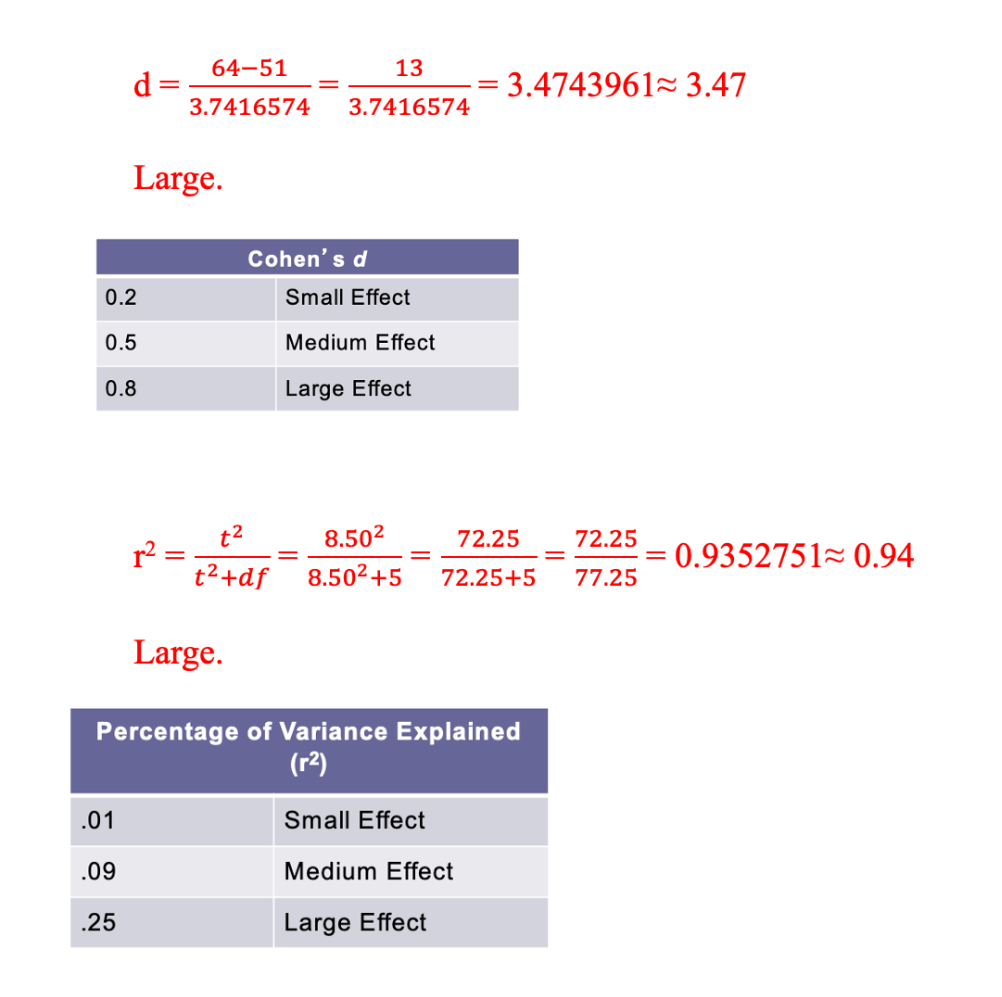
PART 2:
Since the previous question had a statistically significant result, go ahead and compute both Cohen's d and r2.
Be sure to interpret the strength of the effect size!
What is...

PART 2:
Since we determined the dependent t-test result was significant, go ahead and compute Cohen's d and r2.
What is...
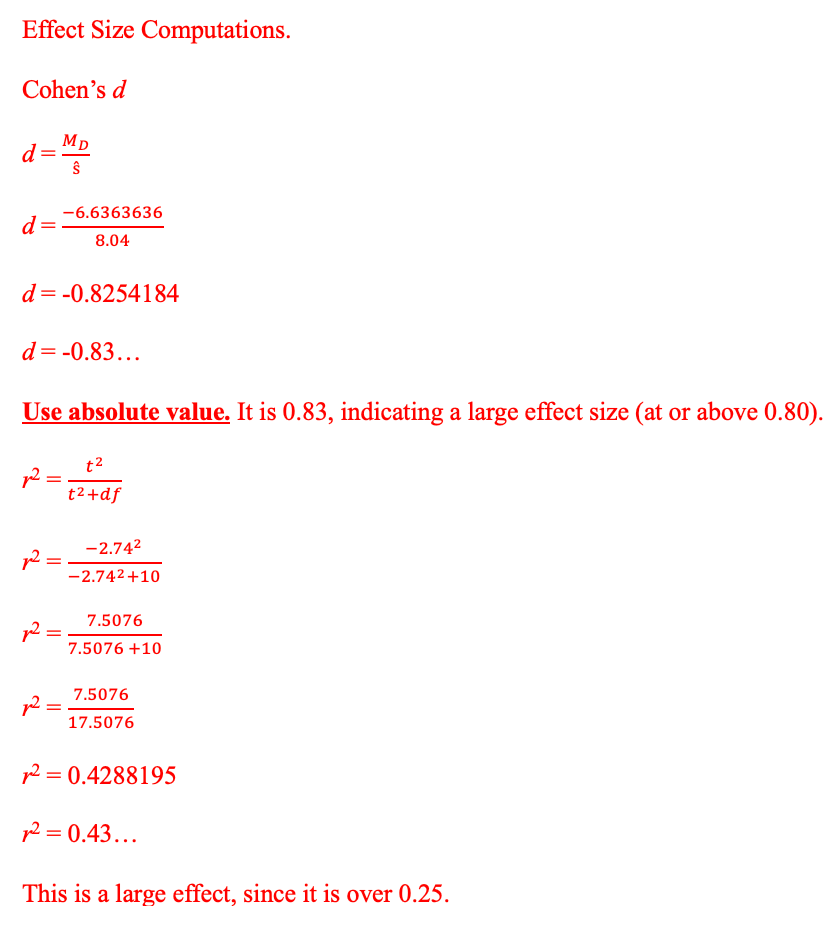
Double-checking with Stats HW Software:
Computational:
A psychologist is interested in studying the impact of different lighting conditions on reading comprehension. Participants are randomly assigned to one of three groups, each experiencing a different lighting condition while reading a passage: bright light, dim light, and natural light. The psychologist hypothesizes that the lighting condition will significantly affect reading comprehension scores. Perform a one-way between-subjects ANOVA and show all work.

What is...
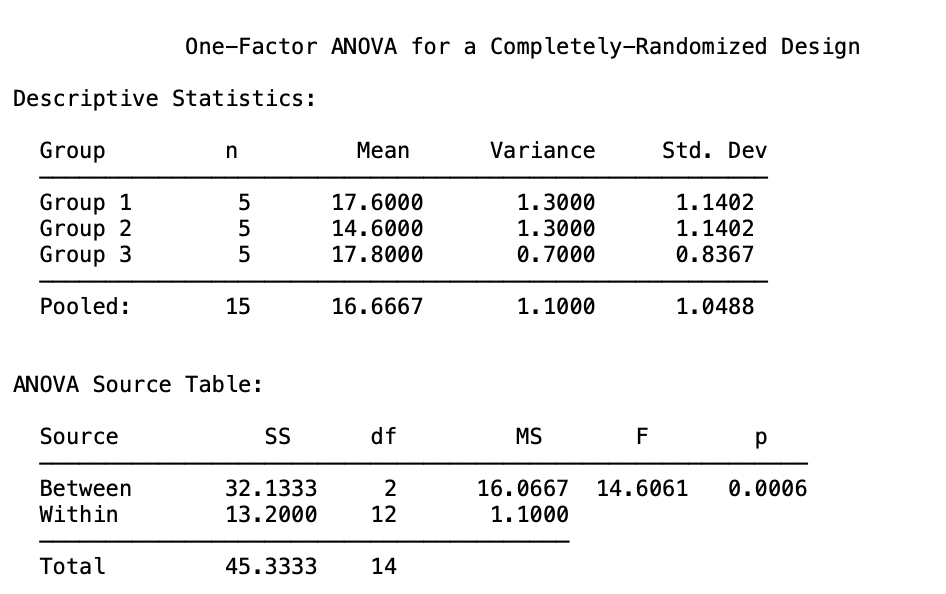

TA work by hand (sorry for the handwriting, but you would know already since you've seen it before, haven't you?):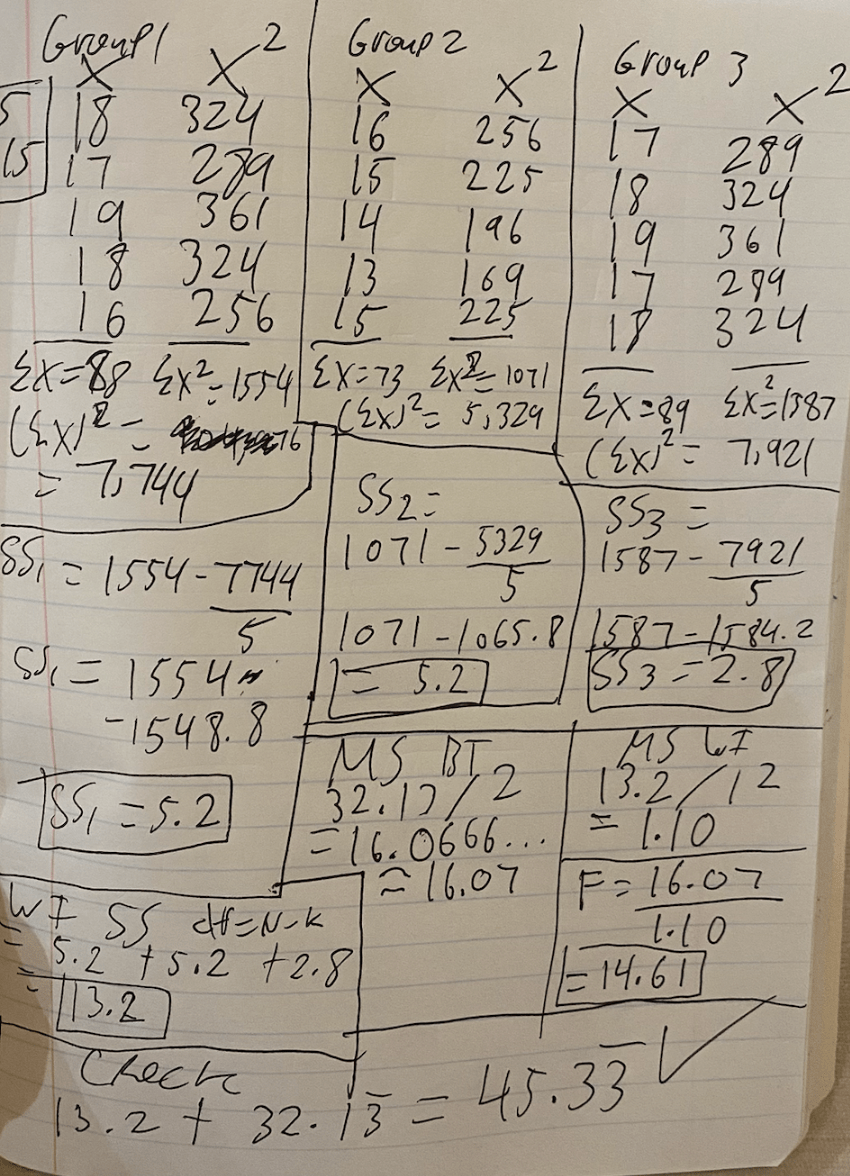
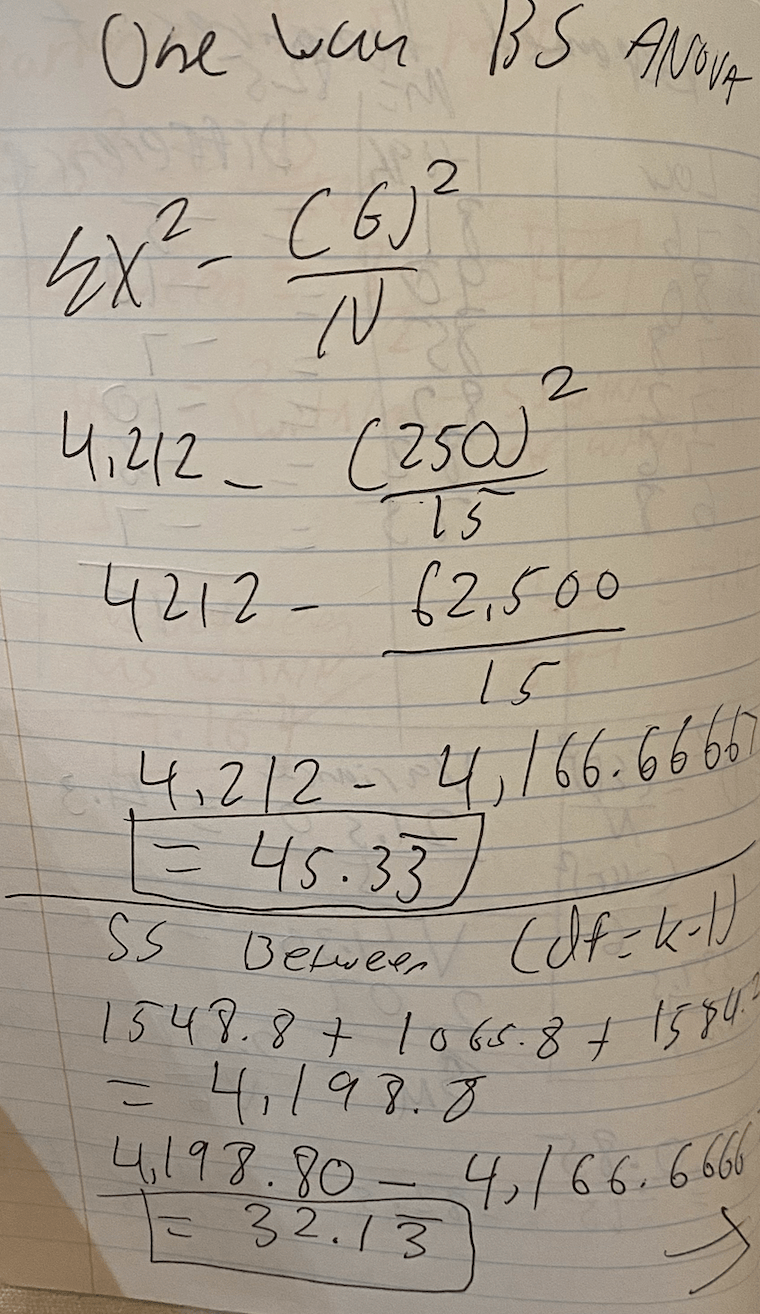
Computational: Calculate the risk of a Type I error if there were 7 means involved and you considered doing multiple t-test comparisons. Then, calculate the experimentwise error. Assume an alpha level of 0.05.

What is...
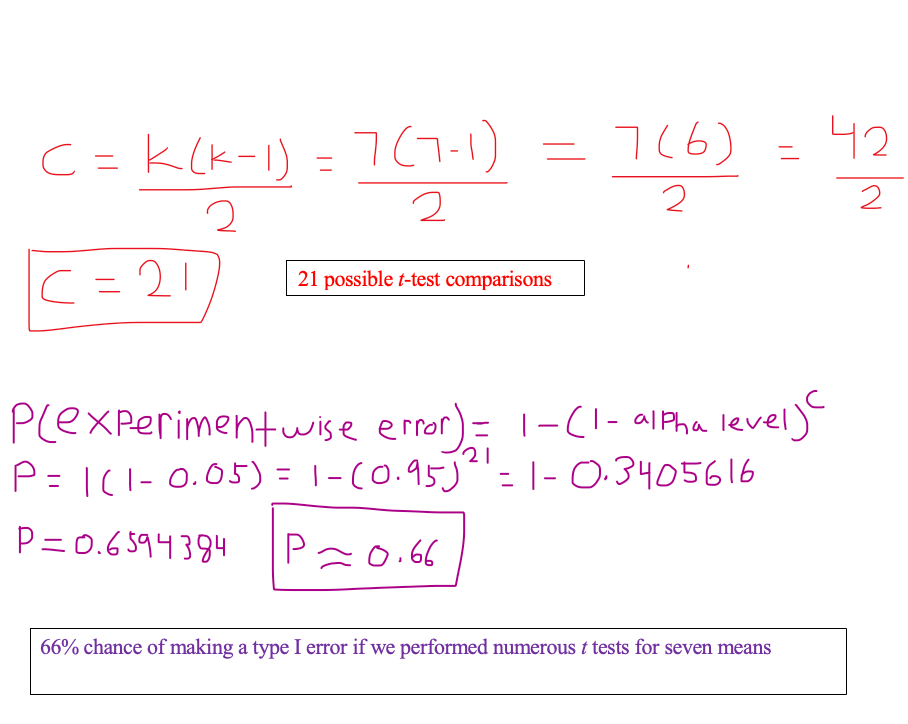
Using the SPSS output below and ONLY the output, tell me if the independent t-test is significant (assume two-tailed and alpha level at 0.05).
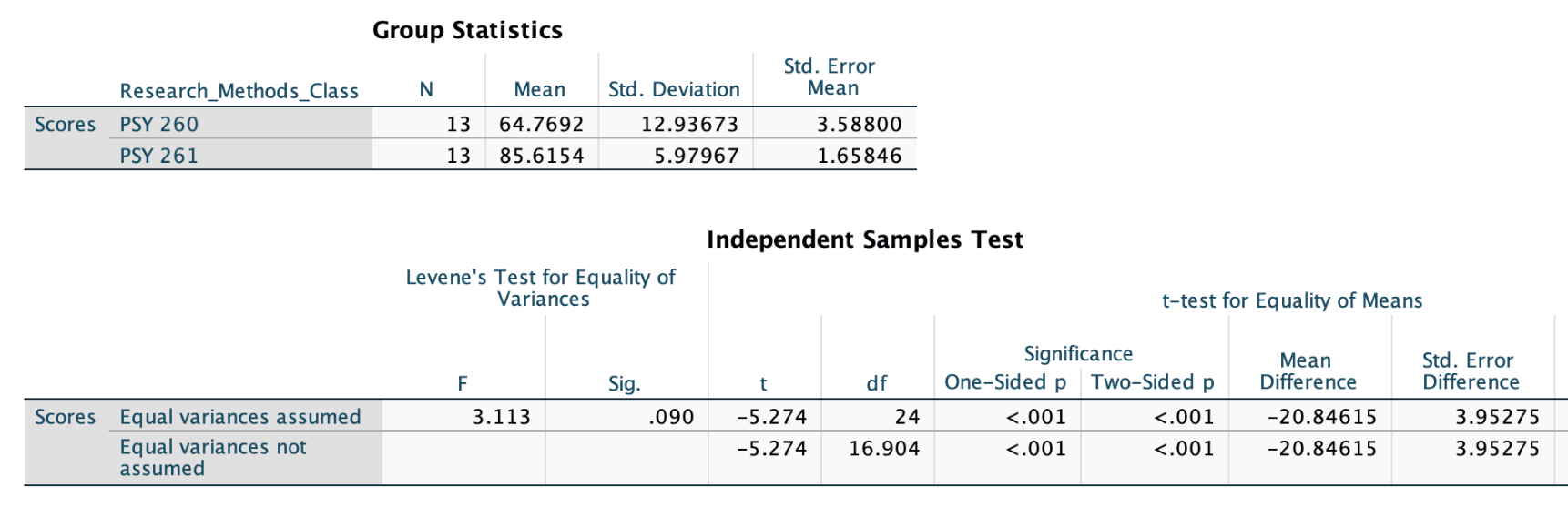
What is...
It is significant. When you look at the t-value, go right where it says significance. We see our p-value is less than .001.
Computational/Conceptual: Using the F-value (14.61) from the last question, reference the F distribution from G&W appendix b, page 597, and determine if it is significant. If so, compute r2 and omega2.


What is...
Critical F value is located at (2, 12) and it is 3.88.

Since our computed F-value is beyond the critical value needed for rejection we can compute r2 and omega2
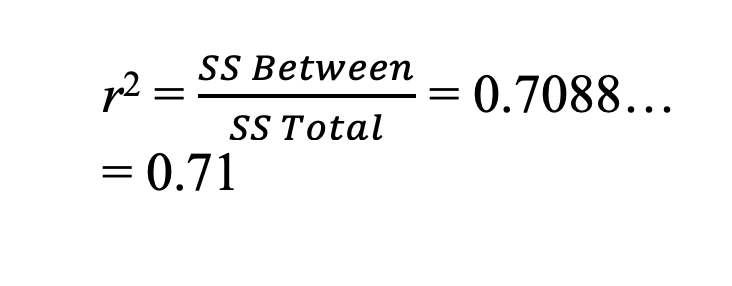
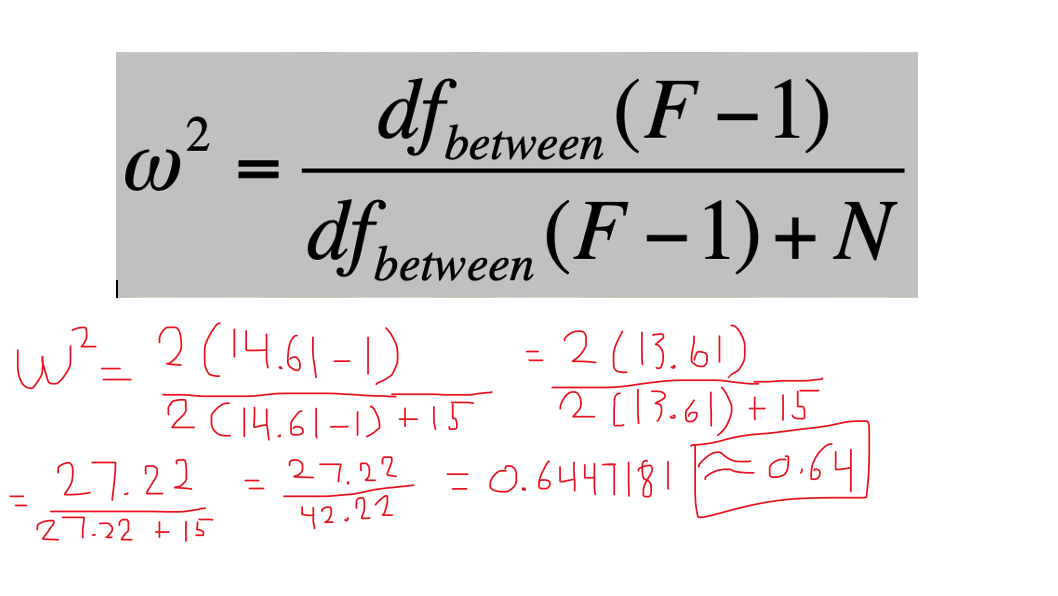
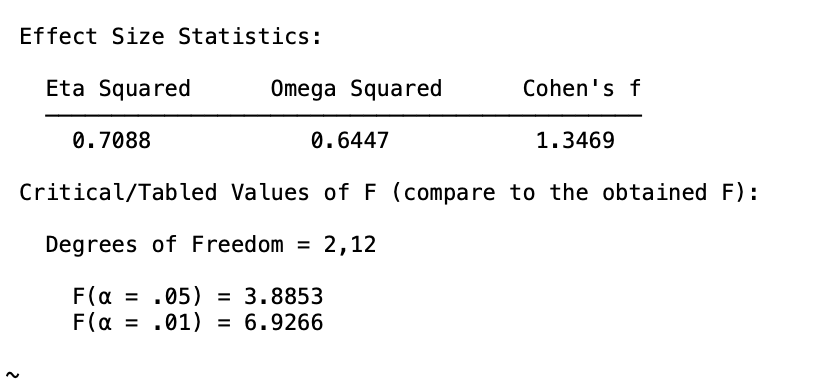
Computational: Compute Tukey's HSD from the values given below. Then, compare the mean differences and determine which ones are significant. Assume an alpha level of 0.05. Formula provided.
"To locate the appropriate value of q, you must know the number of treatments in the overall experiment (k), the degrees of freedom for MSwithin treatments (the error term in the F-ratio), and you must select an alpha level..." - Our Holy Saviors, G&W pg. 417.
USE the Studentized Range Statistic (q) to find the q value to compute Tukey's HSD. The table is located on page 600, appendix B. Table B.5.
Good luck, soldiers.
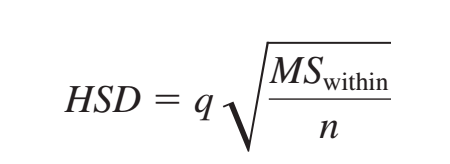

What is...
Q is found first by locating (k). K = number of treatments. If you were just given the source table, you would know that the between-groups degrees of freedom is found by k - 1. 3 - 1 = 2. Therefore, our # of treatments is 3.
Second, the error term is found by the MS within degrees of freedom, which is 12. When you intersect (3, 12), you will find a q value of 3.77
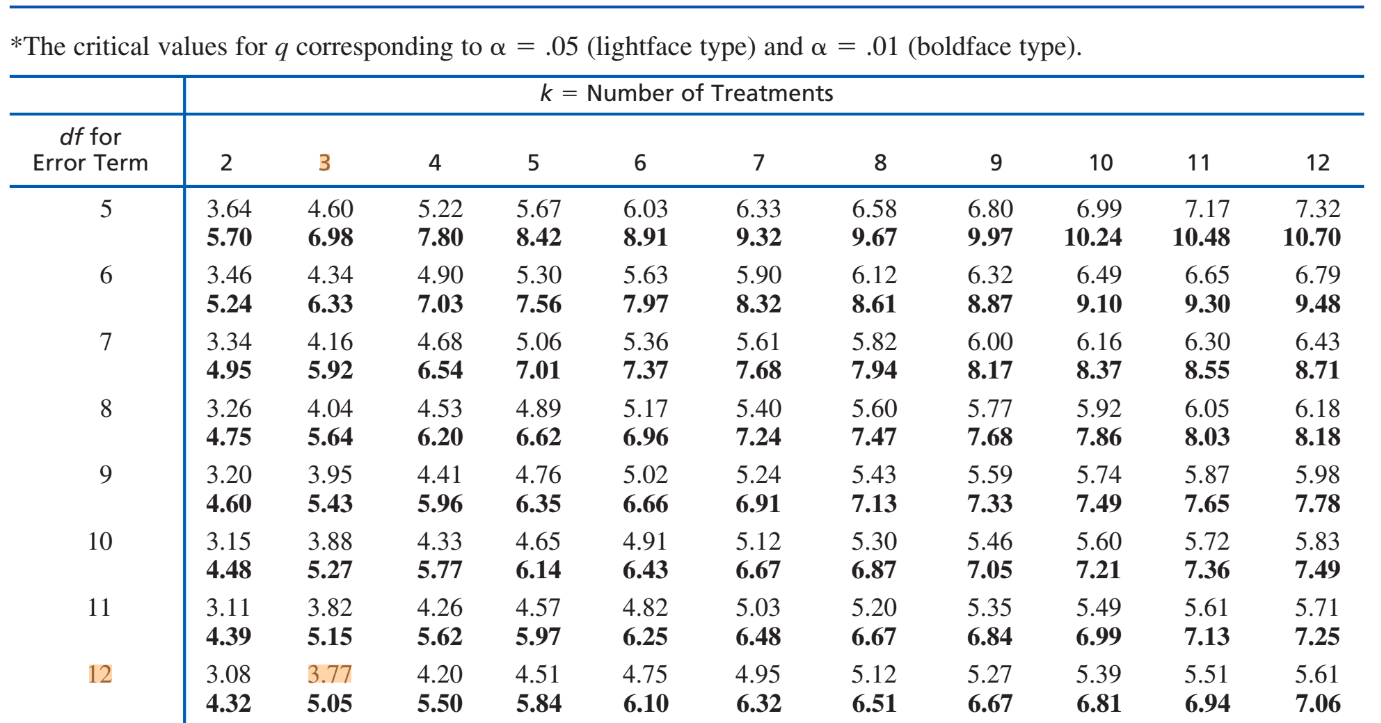
Now you can plug in the values in the Tukey's HSD formula.